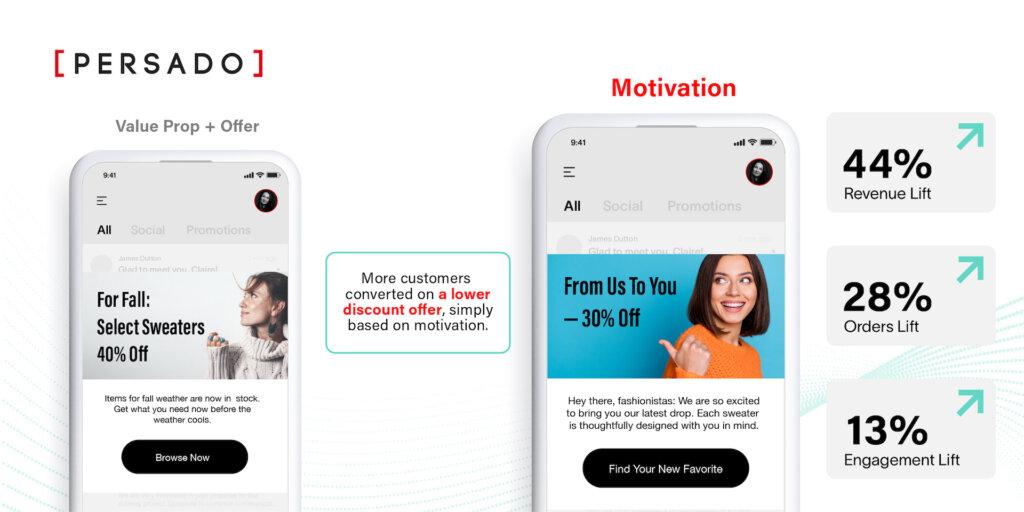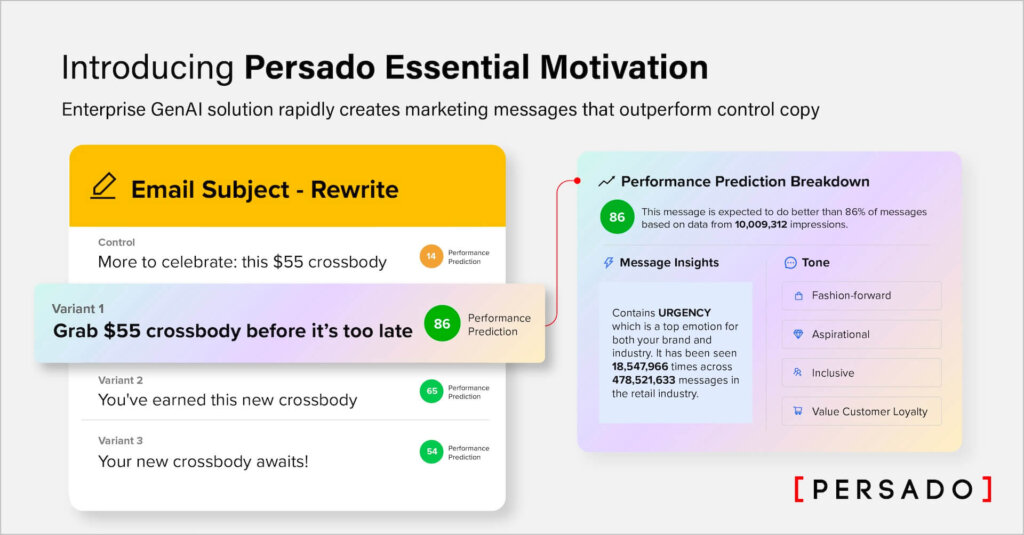February 1, 2024
Conversion Marketing Best Practices and Strategies Explained
By Liza Colburn

Art or science? That debate related to marketing is age-old. It was not that long ago that brands relied solely on selling customers on a vibe, lifestyle, or aspiration using out-of-home (OOH) methods (think billboards and bus shelters), print (magazines and newspapers), or broadcast (television or radio commercials). Like art, these advertisements evoke feelings and desires. However, they mostly leave marketers in the dark regarding their impact. It is impossible to know if the audience you want to reach even sees them or if a particular ad, campaign, or messaging results in revenue. These art-driven marketing formats are still used today and are primarily used for brand awareness. But today, digital marketing, with its capacity for performance measurement, A/B testing, and experimental design, is more of a science. This has given way to conversion marketing, which involves numerous digital marketing channels to track and manage.
What is conversion marketing?
Conversion marketing is a results-oriented digital marketing strategy typically focused on increasing the number of website visitors who perform a desired action, or conversion. A marketing conversion is the ultimate goal of a campaign. A conversion could be making a purchase, booking an upgrade, signing up for a loyalty program, or opening an account, depending on the goal of the campaign.
Organizations track conversions differently depending on their goals. As a result, conversions can appear both early and late in the sales process. More than selling customers and potential customers on a lifestyle or dream, conversion marketing uses both art and science to determine which digital marketing campaigns can be attributed directly to revenue and ROI.
Examples of conversion marketing strategies include:
- Social commerce
- Refer-a-friend programs
- Email personalization and other forms of segment marketing
- Abandoned cart recovery
- Retargeting campaigns
- Landing page optimization
- Exit intent popups
- Reviews and social proof
- Loyalty programs
- Product recommendations
- Personalized digital experiences
- Pre-sale SMS and MMS campaigns
Other digital marketing disciplines such as content marketing, influencer marketing, or paid advertising, also influence conversions. However, these fulfill broader purposes, such as creating brand awareness or promoting a lifestyle or dream to a target audience. They can be part of a conversion marketing strategy. They don’t fall under the category of conversion marketing.
What is conversion rate optimization (CRO)?
Conversion rate optimization, or CRO, refers to the strategies and processes companies use to increase their conversion rate. The conversion rate is the percentage of website visitors who complete a desired action.
The formula for conversion rate is:
[# of conversions / # of website visitors] x 100
Conversion marketing best practices
In order to run a conversion marketing program, marketers must fully define and understand who the target audience is, what they consider a conversion, and how they plan to measure success.
1. Identify and understand the audience you want to reach
Identify the audience segments, what is most important to them, and try to understand what messaging resonates best with each.
2. Clearly define a conversion and conversion goals
It needs to be clear to the entire marketing team what exactly constitutes a conversion and what doesn’t. Is it a sale? A new sign up for a loyalty program? Which actions are most likely to generate incremental revenue or marketing ROI? Brands should take the time to think about what their goals are and build a conversion marketing plan around them.
Once a conversion has been clearly defined, brands should determine what their marketing funnel looks like. It will likely take several interactions before a conversion occurs. So it’s important to understand the customer journey and where customers could be getting stuck.
Marketers should also set goals and benchmarks for how many conversions they anticipate from their marketing efforts and at what cost. Past performance of similar campaigns and industry benchmarks can be used to establish those.
3. Put proper tracking in place
Conversions aren’t very valuable to marketers if they don’t know where they are coming from. Make sure every digital marketing campaign pointing to your website uses the correct UTMs in order to track where traffic and conversions are coming from. Google Ads and Google Analytics also offer different ways to track and optimize toward conversions.
4. Take a data-based approach
Marketers are often surprised, even flabbergasted, by which campaigns and/or messaging gets customers to convert. When it comes to maximizing conversions and digital marketing effectiveness, marketers can’t go off of instinct. They need to let data guide their decisions. Take a close look at what is driving conversions and what isn’t. Then optimize accordingly.
Data points such as clicks or email opens may not be as important as conversions. The campaign that gets the most clicks or email opens may not be the same one that drives the most conversions.
5. Observe and react
Digital marketing campaigns need to run for a period of time before there is enough evidence on whether they are effective or not. While it’s important to concentrate resources and marketing spend on campaigns that drive optimal conversions and limit spending on less effective efforts, marketers need time before doing that. Marketers can also test different approaches and observe the results before totally ruling out a campaign, strategy, or messaging. If a campaign has been shown to not drive conversions, or doesn’t do it cost-effectively, it’s safe to abandon it.
AI-optimized messaging and conversion marketing
Digital marketing messaging optimized by Generative AI is conversion marketing’s secret sauce. Today, enterprise marketing teams have more segments and digital channels than ever before. The pressure is on marketers to generate a high volume of content quickly, consistently, on brand and compliant – and show a positive ROI. Generative AI solutions make digital marketing personalization possible and cost effective thanks to their ability to create content at scale. Without the right solution, however, more AI-generated content does not necessarily result in more conversions.
Persado Motivation AI is an enterprise Generative AI text generation solution built on over a decade of performance insights from real digital marketing campaigns run by Fortune 500 brands. It supplements the standard capabilities of Generative AI for text with performance data that can increase message effectiveness. It’s the only specialized large language model designed to optimize both marketing outputs and outcomes.
Unlike other Generative AI solutions that are trained on generic text pulled from the internet, Persado Motivation AI creates digital marketing messaging that is conversational, on-brand, and proven to motivate customer action. Persado’s top 30 customers have achieved $1.8B in incremental revenue by leveraging the Motivation AI knowledge base across various campaigns, segments, and channels.

People connect with each other and with brands through words. It’s language that inspires customers to act or not. AI-optimized language and human collaboration puts any conversion marketing strategy at an advantage. Using Essential Motivation, Persado’s self-serve Generative AI solution, marketers can instantly generate fast, effective digital marketing messaging across digital channels and industries.

Conversion marketing metrics
Conversion marketing comes down to the metrics. Here are some marketing metrics commonly used to determine the success of conversion marketing campaigns. Please note that terminology, formulas, and metrics can vary across different organizations and industries.
Conversion rate
As described above, the conversion rate is usually the percentage of website visitors who completed a desired action corresponding to the ultimate campaign goal (i.e. sales, bookings, completed applications, etc.) However, it can vary depending on the company and their goals. For example, if a company is laser-focused on email marketing, the conversion rate could be the percentage of email recipients that took a desired action.
It goes without saying that the conversion rate is at the center of any conversion marketing campaign. A high conversion rate indicates that a campaign, landing page, or website is effective and has been optimized for conversions. On the other hand, a low conversion rate means that a campaign, landing page, or website needs improvement.
Cost per lead or acquisition
The cost per lead or acquisition is the marketing cost of acquiring a single customer. It’s calculated by total marketing expenses divided by the number of new customers. Other organizations may consider the cost per lead or acquisition as the total cost of a customer completing a specific action (i.e. making a purchase, completing a form, etc.) No matter how an organization approaches this metric, it’s important to track the cost per lead or acquisition in order to determine marketing budgets, the efficiency of marketing spend, and if conversions are cost-effective.
New vs. returning visitors
How many times do customers typically visit the website before converting? How is the digital experience and messaging different between new vs. returning visitors? At what rate do potential customers return to the website? Knowing the difference in behaviors between first time visitors and returning visitors can help drive more conversions.
Bounce rate
The bounce rate is the percentage of website visitors that leave the website after only viewing one page and don’t take an action such as completing a form, making a purchase, watching a video, etc. According to Google, bounce rate can be calculated by the number of single-page sessions divided by all sessions, or the percentage of all sessions on your site in which users viewed only a single page and triggered only a single request to the Analytics server. Google further states that “these single-page sessions have a session duration of 0 seconds since there are no subsequent hits after the first one that would let Analytics calculate the length of the session.”
A good bounce rate is around 40% or lower, according to Semrush. A bounce rate of 60% or higher may indicate issues with the website such as poor UX, long load times, confusing copy, etc. While bounces are sometimes unavoidable, it’s important to track this metric in order to make sure the website is working properly and that you are attracting the right audience.
Traffic sources
Conversion marketers should pay close attention to different website traffic sources and which ones generate the most conversions, so you can optimize them to drive even more. These sources include social media, direct, email, organic search, paid search, referrals from other websites, and more. For example, if referral traffic from other websites generates a significant number of conversions, the marketing team should look to get more referral links on that website and similar websites. If organic search results in a higher conversion rate than other sources, the team should invest in optimizing more pages from SEO.
Cart abandonment rate
Cart abandonment rates are over 70%, according to the Baymard Institute. It’s no wonder cart abandonment is such an issue for e-commerce retailers. Cart abandonment occurs when customers add item(s) to their online cart, but don’t complete their purchase. The cart abandonment rate can be calculated by dividing the total number of completed transactions by the number of initiated sales and multiplying by 100 to get a percentage. While cart abandonment rates tend to be high, there is a lot retailers can do to optimize their e-commerce websites and reduce cart abandonment. These strategies include clearly displaying all additional fees in the product listing, providing ways to save or favorite items, personalizing messaging in the online cart, and offering multiple payment options.
Loyalty program membership
Loyalty programs are among one of the most popular conversion marketing strategies. They’re a win/win as brands increase customer loyalty and conversion rates and customers are rewarded for repeat purchases. Brands eager to optimize conversions should closely track the growth, engagement, and incentives of their loyalty program. Loyalty programs are an excellent source of first party data and zero party data. As brands get to know their customers better, they can further optimize toward conversions. Learn how to further develop your first party data strategy.
The future of conversion marketing
As customers move more and more online, conversion marketing has become the norm. Digital marketing gives brands the ability to measure how effective their marketing efforts are. As marketing costs increase, brands need their marketing budgets to work smarter and harder. Conversion marketing strategies do just that by optimizing results. It also helps marketing teams secure budgets for those marketing activities that are directly attributed to ROI.
Persado Motivation AI brings a Generative AI-powered solution to your conversion marketing strategy with AI-optimized messaging proven to increase conversions.


